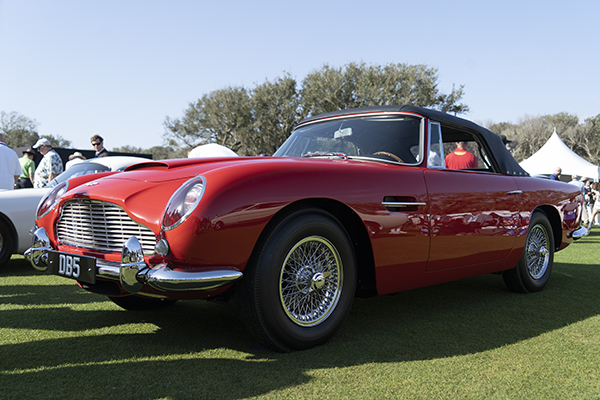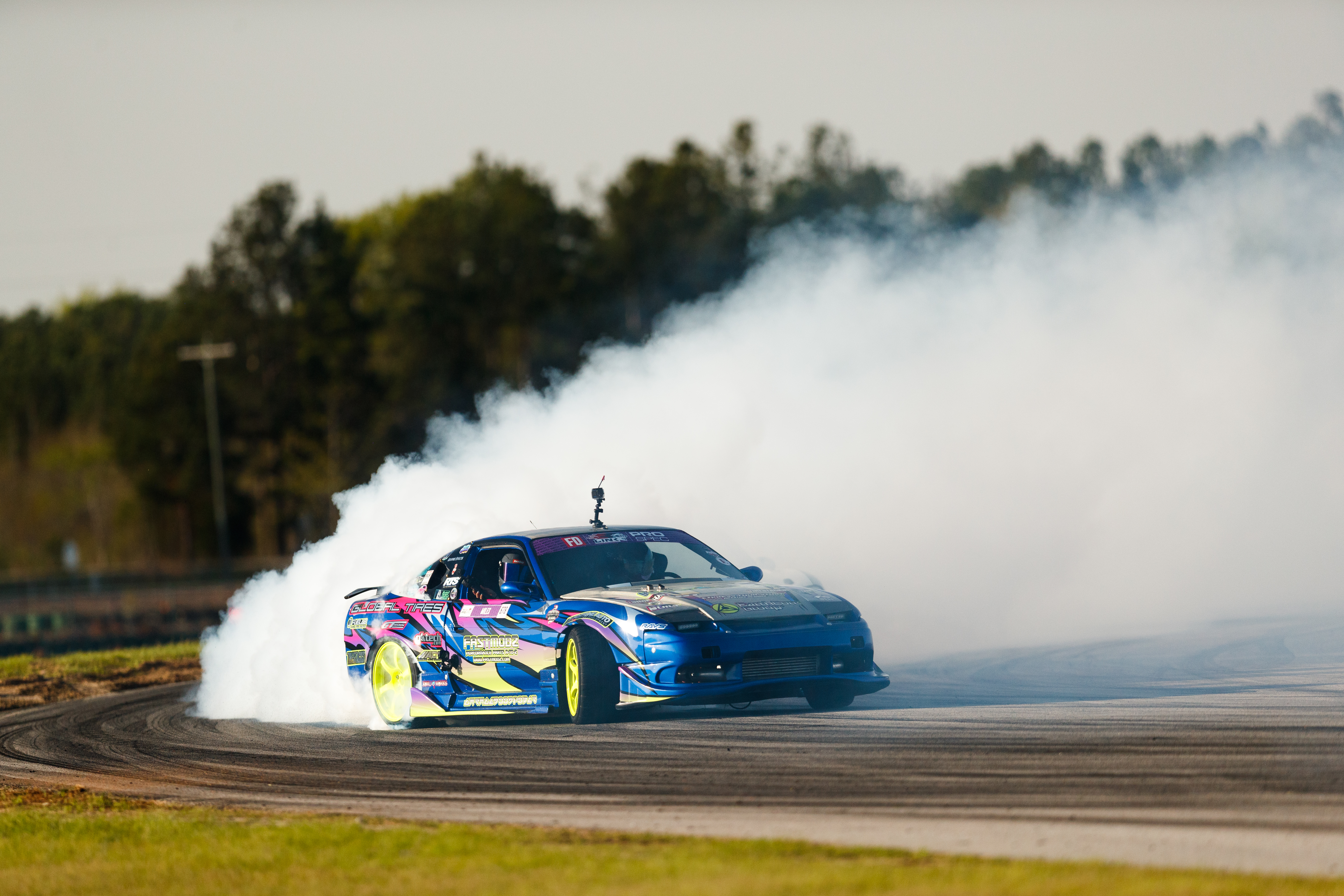
On February 18, 1973, 35,000 fans showed up at the world-famous Los Angeles Coliseum to witness vehicular history. Striding atop his Harley-Davidson XR-750, Evel Knievel took off down a wooden ramp and leaped over 50 crushed jalopies, laid out in 18 rows, two-and-three abreast. The legendary daredevil traveled 120 feet to another ramp on the stadium's opposite end before exiting out the Coliseum's peristyle center arch, a parachute ballooning out behind his motorcycle.
Knievel's death-defying stunt was one of the countless moments of glory that have taken place inside the stadium's hallowed concrete walls. On February 6, 2022, the Los Angeles Memorial Coliseum — built in 1923 in dedication to World War I veterans (it was re-dedicated to vets of both wars on Memorial Day 1946) — will once again make automotive history.
NASCAR is making its Coliseum debut with the Busch Light Clash, to be run on a quarter-mile asphalt oval (the shortest track in modern Cup Series history) constructed around the University of Southern California Trojans' home football field. Hosting the literally groundbreaking race is the latest example of how the “Greatest Stadium in the World" has helped define Los Angeles itself.
History in the making.#BuschLightClash | https://t.co/7bpRDf9Gsk pic.twitter.com/rOFo5YDiTG
— NASCAR (@NASCAR) December 21, 2021
THE COLISEUM'S EARLY HISTORY
“A lot of people think the Coliseum was constructed for the 1932 Olympics, but that isn't the case. Originally, at a time when the population of Los Angeles was around 600,000, the city fathers came together to create a civic space for people to gather and experience new things, the home of events to bring the community together, it was multipurpose before the term even existed," says Chris Epting, author of some 40 books about baseball, travel, rock-and-roll and California, including a pictorial history of the Coliseum.
“The Olympics certainly put it on the map, but what makes the Coliseum so unique and special is its flexibility and diversity of offerings. Name another venue that's welcomed international soccer matches, hometown hero Gen. George Patton re-enacting actual battles with tanks and planes, famed African-American music festival 'Wattstax,' Pope John Paul II and Motley Crue?"
Multiple presidents have politicked the masses at the Coliseum, including John F. Kennedy, who delivered his renowned “New Frontier" speech upon accepting the Democratic Party nomination in 1960; but the stadium remains first and foremost a sporting one. The original 75,000-seat venue (constituting more than 10% of city residents) was designed by the father-son team of John and Donald Parkinson, who toured the world for inspiration. It led to the Coliseum's piece de resistance, the peristyle featuring soaring marbled arches evoking the ancient Colosseum of Rome that remains awe-inspiring to this day.
The $950,000 project was a private-public partnership intended to offer Angelenos free grand-scale events, with the intention of securing the 1924 Olympics. It would take another eight years — and an additional 30,000 seats — to come to fruition. The Great Depression led to a low turnout in participating countries, but attendees of the X Olympiad got to see the United States take home 103 medals and gaze out at the new Olympic cauldron burning with pride above the peristyle.

1932 Olympics | Public Domain
The Coliseum architecture stood the test of time. On July 27, 1984, it was declared both a state and federal landmark. The next day, 1960 gold-medal decathlete Rafer Johnson took the torch from Gina Hemphill (Jesse Owens' granddaughter), ascended 92 steps, lit the Olympic Rings and Cauldron, and kick-started the XXIII Olympiad as the Coliseum became the only stadium to host the games twice. In the midst of the Cold War, the Soviet Union boycotted, so it became an all-American party with the United States taking home 174 medals. Unforgettably, four gold medals were captured on the Coliseum grounds by track-and-field phenom Carl Lewis.
NOT ONLY FOR OLYMPIANS
As important as the Olympics are in the Coliseum's legacy, they are a rarity. The building's foundation is football. In 1967, the Green Bay Packers whooped the Kansas Chiefs in Super Bowl I, and in 1973, the Miami Dolphins capped the lone undefeated season beating Washington 14-7 in Super Bowl VII. Six teams have called it home, including three NFL squads you've heard of, the Chargers, Raiders and Rams (twice).
On the collegiate level, the UCLA Bruins played at the Coliseum from 1933-81, but the granddaddy of them all is the USC Trojans, who took the field five months after the stadium opened (beating the Pomona Sagehens 23-7 on October 6, 1923) and never left. The Trojans have won 11 national championships over that timespan, cementing their place as the premier west coast team in collegiate history.
And there is simply nothing like the Coliseum when it's rocking with 80,000 of the Trojan faithful strong; take it from someone who's been under center at the center of the football universe.
“When you look at The Coliseum from the outside street level, it's impressive, but you can't take in the full scope of it until you get inside because the field is 30-feet below grade. The scale of the structure is just amazing," says John David Booty, the 2006-07 USC quarterback who led them to back-to-back Pac-10 titles and Rose Bowl victories.
“Before I became the starter," he continues, "I was blessed to soak in the peak USC domination years on the sidelines. The place is packed, fans are going crazy, there's celebrities everywhere, the noise is deafening, the sun is shining or peeking through that misty Southern California Marine Layer, the total vibe. I may be biased, but I've been to a lot of rowdy stadiums, and for my money, the Coliseum is the best."
In a stadium that's seen all manner of athletic events including heavyweight boxing, rodeo, motocross, and ski jumping (yes, you read that correctly), two of the most impressive attendance records were set at a sport that didn't exactly fit within its Exposition Park confines. When the Dodgers broke Brooklyn's heart and moved to Los Angeles following the 1957 season, the stadium in Chavez Ravine wasn't constructed. The team spent four seasons playing in the Coliseum with some of the most ridiculous jerry-rigged dimensions baseball has ever seen. It was a whopping 440-feet to right-center field, while left field was a scant 250-feet, which required a 40-foot net, nicknamed “The Screen Monster," to protect fans.
It was upon the ill-suited field that pitcher Sandy Koufax took the hill in Game Five of the 1959 World Series. The Hall-of-Fame lefty took a 1-0 loss to the Chicago White Sox that October day in front of a still-standing record World Series crowd of 92,706. In 2008, to celebrate the team's golden anniversary in LA, an exhibition between the Dodgers and Red Sox was held. This time the “outfield" fence was a mere 201-feet away in left, which meant a 60-foot screen was erected in front of some of the 115,300 fans, the largest crowd ever to watch a baseball game.
Standing the Test Of Time
In so many ways, the storied Coliseum history is the history of Los Angeles, a place not known for its permanence.
“The 1994 Northridge earthquake did a lot of damage to the Coliseum, and there was talk about whether it was worth repairing, but the city rallied around it as a symbol of resilience. Los Angeles is not great at preservation, think of all the classic old Hollywood venues that could have been saved, so the Colosseum is our cultural touchstone," says Epting. “We all have our own unique memories of the place. When I was writing my book, they gave me a key to the place. My son and I would bring a football and play catch on the field in the empty stadium. I have a deeply emotional connection to the Coliseum."
It's a connection shared around the world because everybody knows the joint. Part of the Coliseum's charm is its familiarity, even to those who've never hiked the mammoth staircases. Thanks to its proximity to Hollywood, the Coliseum has been a central recognizable figure in film and television since the gates were first opened. From the silent days of Buster Keaton's The Three Ages and College, to the streaming era in last year's Lucifer season five finale, to countless movies in between — best epitomized in the Super Bowl scenes of Heaven Can Wait, starring Warren Beatty as Rams quarterback Joe Pendelton, filmed at halftime of a 1977 preseason game against the San Diego Chargers — the Coliseum has always been camera-ready.

Construction of Memorial Coliseum in 1922 | Wikipedia Creative Commons
The cameras will certainly be rolling when NASCAR comes to town. Approaching its 100th birthday, the Los Angeles Memorial Coliseum is in as good of shape as it's ever been. The old stadium remains adaptable, and the high speeds on the short-track at the Busch Light Clash would bring a smile to Evel Knievel's grizzled face. The race promises a whole new way of looking at the venerable iconic Coliseum, which, in 2028, will become the first stadium to host three Olympics.
“I've only been in the Coliseum for football, but my eight-year-old son is huge into race cars. I have to try and make the Clash happen," says Booty. “Holding a NASCAR race inside is such a cool idea, I know it's going to be amazing. When the Coliseum is rocking, it'll set your hair on fire."
Have you experienced this historic venue? Let us know in the comments.
Planning on going to Clash on February 6th? Advance Auto Parts will be there with you! Get your tickets today and check out our fan event — we'll see you at the Clash!







